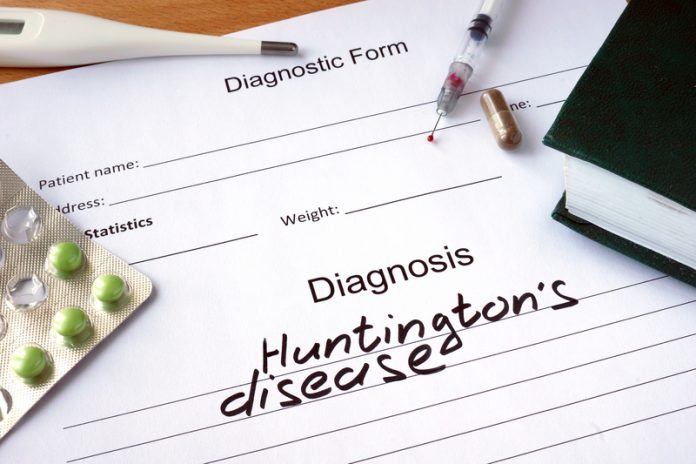Leora Fox, Jennifer Simpson and George Yohrling from the Huntington’s Disease Society of America explore the sources of funding in the development of therapies for Huntington’s disease (HD)
Huntington’s Disease (HD) is an inherited brain disorder affecting approximately 1 in 10,000 people in the United States. (1,2) HD patients suffer from a triad of debilitating cognitive, emotional and movement symptoms that usually strike during a person’s prime working years but can sometimes appear as young as early childhood. Huntington’s disease is defined as a rare disorder because of its prevalence of fewer than 200,000 affected individuals in the United States. (3) An estimated 30,000 people in the US are symptomatic, with an additional 200,000 at risk. (4,5) In comparison, 5.7 million Americans are affected by Alzheimer’s disease and 14 million are projected to be diagnosed by 2050. (6) Given this disparity in medical and social impact, the development of treatments for rare and debilitating disorders like HD requires the collective efforts of public and private entities.
The management of Huntington’s disease relies on conventional, non-specific medications to address individual psychiatric symptoms like anxiety and psychosis and to calm the characteristic involuntary movements known as chorea. These approaches can temporarily mask the signs of a deteriorating brain, but they are not reparative or restorative. Designing therapies aimed at the genetic and biological causes of HD requires an in-depth understanding of its underlying biology and pathology. Traditionally, such research has been the realm of government entities like the National Science Foundation (NSF) and the National Institutes of Health (NIH). As the largest public funder of biomedical research worldwide, (7) the NIH dedicated more than $2 billion to neurodegenerative disease research in 2016, with $37 million devoted to HD-specific projects, comprising just under 2% of the spending on neurological diseases. (8) Funding of studies that look at the biology and pathology of rare neurodegenerative diseases like HD are essential to furthering our understanding of rare and complex diseases, paving the way for novel therapies in humans.
Limited funding in the HD field leaves little space for high-risk, high-reward projects and creates intense competition that can discourage a young scientist’s commitment to a rare disease like HD. As a result, research funding through private entities like non-profit foundations must be present to foster medical progress. The HD field is extremely fortunate to have dedicated sources of non-government funding; the largest, CHDI Foundation, a privately-funded, not-for-profit biomedical research foundation, is focused solely on the development of therapeutics for Huntington’s disease. CHDI has an estimated annual budget of $100 million, (9) nearly three times the reported NIH contribution to HD research in 2016. To avoid duplicate efforts and maintain collaborative relationships, other HD organisations carve out complementary niches in their research focus or grant funding programmes. The Huntington’s Disease Society of America, for example, funds HD research initiatives that focus on humancentric projects, engaging promising young scientists, promoting opportunities for community engagement in trials and providing support to researchers with strong mentorship who are committed to becoming independent and devoting their professional lives to HD.
Ultimately the goal of government and non-profit investments in HD research is to bring effective treatments to market. This is greatly expedited by public-private partnerships and requires investment from industry, especially as novel potential therapies enter the clinical phases of the research pipeline. In the HD field, the efforts of researchers supported by the government, the not-for-profit sector and industry funding, combined with the tenacity and dedication of affected families, culminated recently in a clinical trial to test the safety of a novel gene therapy designed with the underlying biology of HD in mind. Its success, announced in December 2017 and detailed at the 2018 CHDI HD Therapeutics Conference, has led to a significant investment from Roche Pharmaceuticals to plan and execute a critical Phase 3 trial. (10) Beyond supporting and contributing to the medical research itself, public-private partnerships help to speed the regulatory processes behind drug development and approval. In March 2018, the Critical Path Institute (C-Path) and CHDI announced the official launch of the Huntington’s Disease Regulatory Science Consortium (HD-RSC), which will include representatives from various sectors and will focus on cost reduction and efficiency in HD drug development. (11)
With the field poised on the brink of several promising trials, diverse funding sources and collaborative initiatives between government, the not-for-profit sector and industry remain critical to expand our knowledge of HD biology and hasten the progress of medicine. The rarity of Huntington’s disease does not lessen the needs of affected families, and additional resources serve to solidify a collaborative research community and power faster medical innovations both inside and outside of the HD field. Therefore, we need to be vigilant in ensuring increased access to funding for rare disease projects. This includes working to increase the visibility of rare disease research in such a way that both public and private entities recognise the potential of their investments to inform broader medical applications, pave the way for novel methodologies, and shape policy for the Huntington’s disease community and beyond.
References
1 Pringsheim T, Wiltshire K, Day L, Dykeman J, Steeves T, Jette N. The incidence and prevalence of Huntington’s disease: a systematic review and meta-analysis. Mov Disord. 2012;27(9):1083-91.
2 Rawlins MD, Wexler NS, Wexler AR, et al. The Prevalence of Huntington’s Disease. Neuroepidemiology. 2016;46(2):144-53.
3 National Organization of Rare Diseases. Rare Disease Resources & FAQs. Retrieved from https://rarediseases.org/for-patients-andfamilies/information-resources/resources-faqs/
4 Huntington’s Disease: A Family Guide [Pamphlet]. New York, NY. Huntington’s Disease Society of America (2016).
5 Huntington’s Disease Society of America. What Is Huntington’s Disease? Retrieved from http://hdsa.org/what-is-hd/
6 Alzheimer’s Association. (2018, March 19). Latest Alzheimer’s Facts and Figures. Retrieved from https://www.alz.org/facts/
7 National Institutes of Health. Impact of NIH Research. (2018, May 08). Retrieved from https://www.nih.gov/about-nih/what-we-do/impactnih-research
8 US Department of Health and Human Services. (3 July 2017). Estimates of Funding for Various Research, Condition, and Disease Categories https://report.nih.gov/categorical_spending.aspx
9 The precious participation of the Huntington’s disease community in the quest for treatments: A report on the 2015 HD Therapeutics Conference. (2015, March 25). Retrieved from http://www.newshd.net/organization/7007/the-precious-participation-of-the-huntingtons-disease-community-in-the-quest-for-treatments-a-report-on-the-2015-hdtherapeutics-conference/
10 Ionis Pharmaceuticals. (2017, December 11). Ionis Pharmaceuticals Licenses IONIS-HTT Rx to Partner Following Successful Phase 1/2a Study in Patients with Huntington’s Disease. Retrieved from http://ir.ionispharma.com/news-releases/news-releasedetails/ionispharmaceuticals-licenses-ionis-htt-rx-partner-following
11 C-Path and CHDI launch consortium to accelerate development of Huntington’s disease therapies. (2018, March 28). Retrieved from https://c-path.org/c-path-and-chdi-launch consortium-to-accelerate-development-of-huntingtons-disease-therapies/
Leora Fox, PhD
Manager of Research and Mission Programs
Jennifer Simpson, LCSW
Senior Manager of Advocacy and Youth Programs
George Yohrling, PhD
Senior Director of Mission and Scientific Affairs
Huntington’s Disease Society of America
hdsainfo@hdsa.org
http://hdsa.org/
@HDSA











